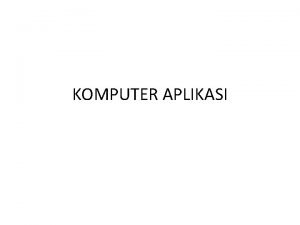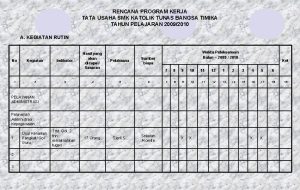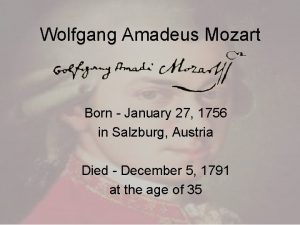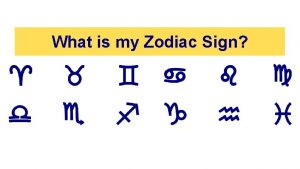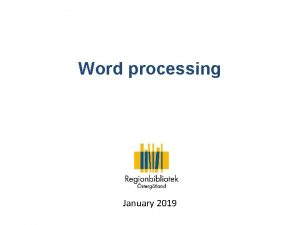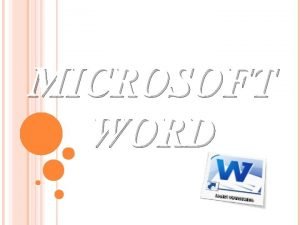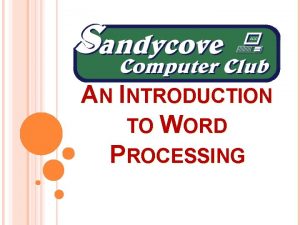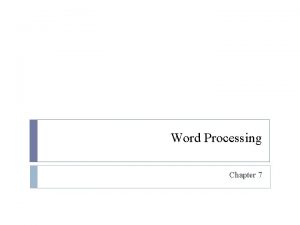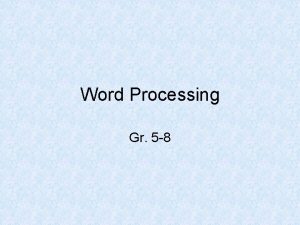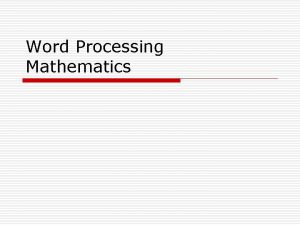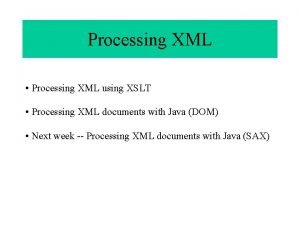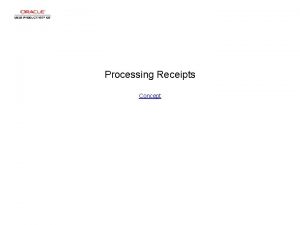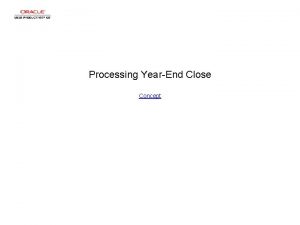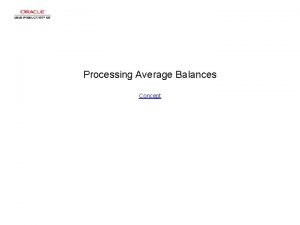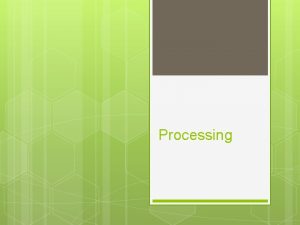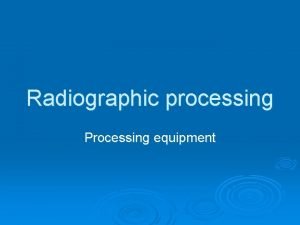Word processing January 2019 Word is a program


















- Slides: 18

Word processing January 2019

Word is a program in the Microsoft Office software suite. The other applications in the suite are Excel, Power. Point, Publisher, Outlook and Access. Word is a tool used to create different types of documents, such as articles, letters or reports. It is also possible to add pictures, maps and tables combined with text. There a few differences between the various versions of Microsoft Word, but all versions contain tools used to compose and format text documents. Word can be used to save your text in multiple file formats. One example is PDF format. When you share a PDF file, practically anyone can read it using the free program Adobe Reader. Microsoft Office is not free, but there are some alternative freeware programs that can be downloaded from the Internet. One example is Open Office. This is a program allowing you to open files created in Word can also open files created in Open Office. Use the link below to download Open Office free of charge: http: //download. openoffice. org/index. html

Document name bar Menu bar Toolbar Used to scroll up Left margin Top margin Vertical ruler Horizontal ruler Right margin Use the cursor to specify where in the document you want the text to appear. The cursor is a flashing vertical line. The grey rectangle shows the area inside the margins Vertical bar used to scroll up and down in the document Used to scroll down in the document Horizontal bar used to scroll left and right. Drawing toolbar

§ Save: Save the document after making changes, under the same file name § Save as: Saves the document for the first time. § Open: Open a document that you have already created and saved. § Recent: The most recent documents you created. § New: Open a new blank document. § Print: Print an entire document. and in the same location.

Font size Bold Italics Underline The Formatting toolbar • • • Font: Select the font by clicking on the small arrow. There are many different fonts. Font size: Select the size by clicking on the small arrow. Bold: Click B in order to bold the text. Unbold the text by clicking B again. Italics: Click I in order to italicize the text. Remove the italics by clicking I again. Underline: Click U to underline the text. Remove underlining by clicking U again.

Different fonts Arial mistral Engravers mt curlz MT Times New Roman ﺍﻧﺪﻟﺴﻲ Different font sizes Font size 14 Font size 20 Font size 40 Font style Bold Not bold Italics Bold and Italics Underline and Bold Underline, Bold and Italics Underline and Italics Font size 60

Undo Redo Cut Copy Paste Format painter Editing tools • • • Cut: Used to cut out all or selected parts of the document, allowing you to paste them into another location in the document or into another document. Copy: Used to copy all or parts of the document and paste them into another location in the document or in another document. Paste: Used to paste the part of the document cut or copied in the previous step. Move the cursor to exactly where you want the text to be and then click Paste once. Format painter: Make a copy of the text format’s size, style, colour, font, etc. , and copy this formatting to another part of the text. Undo: Undoes the most recent operation If you click this arrow, you can go back in the document and undo multiple steps. Redo: Click to redo what you just undid.

Left alignment Centred Justified Right alignment Line spacing Left to right Right to left Numbered list Bullet list Decrea se Indent Increas e Indent Formatting toolbar • Align text left: Left margin straight and right margin irregular. The paragraph is aligned with the left margin. • Centred: The paragraph is centred on the page • Align text right: Right margin is straight, and the left margin becomes irregular. The paragraph is aligned with the right margin. • Justified: Produces straight left and right margins. • Line spacing: Specify the spacing between the lines; click on the arrow for a list that you can select from. • Left to right: Sets text direction from left to right, for instance text written in Swedish or English. • Right to left: Sets text direction from right to left, for instance text written in Arabic. • Numbered list: Used when you have written a number of items that you want to number. • Bullet list: Works the same way as a numbered list, but inserts bullets instead of numbers. • Decrease Indent: Decreases the indent of a paragraph. • Increase Indent: Increases the indent of a paragraph.

Align text left Centred Align text right Bulleted list - In order to compose a bulleted list: Write the first item, and then click Bulleted list on the toolbar. Every time you press Enter, a new line with a bullet is created. To complete the list, press Bulleted list on the toolbar again. • • • The first bullet The second bullet. The third bullet. Numbered list - In order to compose a numbered list: To write a numbered list, begin by writing the first item, and then press Numbered list on the toolbar. Every time you press Enter, a new numbered line is created. To complete the list, press Numbered list on the toolbar again. 1. 2. 3. The first number. The second number. The third number.

External border Highlight colour Font colour Formatting toolbar • External border: Used to draw a border around the text. • Highlight colour: Used to select the characters’ background colour. You can select any colour from the list by clicking on the arrow. • Font colour: Select the font colour from the list by clicking on the arrow.

Hyperlink Draw Table Insert Table Excel table Colum ns Word. Art Search Show % Read/ View The Toolbar • • • Hyperlink: Used to insert a link to another file or website on the Internet. Draw Table: Used to draw a table with the mouse pointer. Insert Table: Used to add a table – you can determine the number of rows and columns. Excel Table: Insert an Excel spreadsheet. Columns: Split text into columns – you decide how many columns you want. Word. Art: Used to add decorative text. Search: Used to search for a word or paragraph in the document. Zoom %: Increase or reduce the level of zoom with which the document is displayed. Read/View: Read/View the document in full screen mode.

Insert images • • Click Insert. Select Image. Opens a dialogue box where you can select an image from the computer, then click Insert. Word 2010

Inserting shapes or Word. Art in documents Used to add a shape or to combine multiple shapes. Click on the Insert menu and choose Shapes. You can choose among lines, standard geometric shapes, arrows, etc. Selects decorative text you can add to a document It is possible to change the size of a shape by hovering the mouse Select the shapeover you the edge of the shape. When the mouse pointer becomes a want to insert indouble the arrow, you can drag the shape to make it larger or smaller. document • Use the Insert menu and select Word. Art to add decorative text to a document. Opens ready-made models that you can choose from. You can make changes to existing Word. Art, such as to the font size and text colour, by using the drawing tool options that automatically appear when you insert or select Word. Art in a document. Or right-click on the shape using the mouse, and select Write text here Format Auto Shape.

Inserting page numbers • Click on the Insert menu and select Page Number. Choose where the page numbers are to display here Click here to display the number format. • You can decide where you want the page number to appear in the dialogue box. • You can choose whether you want to use letters or numbers for the pagination, and which letter or number you want the pagination to begin with

Borders Previews the page border Page border style Choose whether to apply a page border to the entire document, or some other option. . Open Page Layout and then click Page Borders. • The following dialogue box opens where you can select the style of the page border, page border type, the width of the page border, as well as art. Borders and Shading Tab 1, Borders Tab 2, Page Border Tab 3, Shading

Margins and Page Setup • Control the margins by opening Page Layout and choosing Margins.

Save • Save a new file by opening the File menu and selecting Save As. Choose where you want to save the document here File name File format Save the file as a PDF • • There are several file saving options in Word. A dialogue box displays where you can choose where you want to save the document, the name you want, as well as the format. To create a new document, select Save As from the File menu. To save the changes you have made to a previously saved document, click Save on the toolbar or select Save from the File menu. To make a copy of an existing document, select Save As and enter a new name for the document.

Preview and print Print entire document Before printing, it may be good to have an idea of what your document looks like. Preview mode displays each page in the document as an image. • Open the Print menu and select Print. There are several options to choose from. Number of copies Choose a printer In order to print specific pages, enter the page number in the adjacent box Collation • Open the Print menu and select Print. A new dialogue box displays where you can choose from various printing options.
 Wednesday 9 january 2019 chemistry mark scheme
Wednesday 9 january 2019 chemistry mark scheme Ms word
Ms word Top down vs bottom up processing
Top down vs bottom up processing Gloria suarez
Gloria suarez Bottom-up processing examples
Bottom-up processing examples Neighborhood averaging in image processing
Neighborhood averaging in image processing Example of primary processing
Example of primary processing Fractal
Fractal Histogram processing in digital image processing
Histogram processing in digital image processing Parallel processing vs concurrent processing
Parallel processing vs concurrent processing A generalization of unsharp masking is
A generalization of unsharp masking is What is point processing in digital image processing
What is point processing in digital image processing Morphological dilation
Morphological dilation Top down processing
Top down processing Batch processing and interactive processing
Batch processing and interactive processing Program kerja tata usaha smk
Program kerja tata usaha smk January 27, 1756
January 27, 1756 Zodiac for january 20
Zodiac for january 20 4 january 1643
4 january 1643

